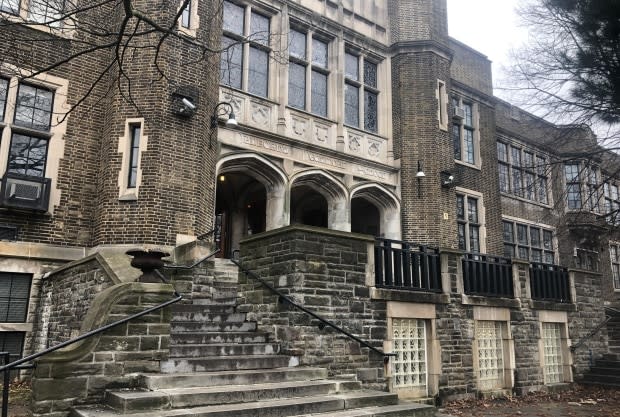Ontario unveils details of learn-at-home program, students out of school until at least May 4
Ontario students won't be back in the classroom until at least May 4 as the province continues to battle the spread of COVID-19, the government announced Tuesday.
Effective immediately, publicly-funded schools will remain closed until May 1 for teachers and May 4 for students, Premier Doug Ford confirmed at a news conference, adding he is prepared to extend the closures even further if the province's chief medical officer of health advises him to.
Private schools, licensed child care centres and EarlyON programs will also remain closed for at least another two weeks, according to the province's emergency declaration, which only allows closures to be extended for 14 days at a time.
"We know from the medical experts that the next two weeks will be critical in the fight against COVID-19 and that's why we're taking further action to keep our kids safe and healthy by having them stay home," said Ford.
Speaking to reporters, Ontario Education Minister Stephen Lecce announced a new "teacher-led" program to keep students learning while at home. Lecce also said teachers will be issuing final grades and report cards, meaning work completed at home will be graded. Whether or not the school year will extend into the summer has yet to be determined, he said.
Lecce said the plans will incorporate online learning, but where that is not possible, telephone calls and mail-out packages will be used.
For now, students will continue to complete credits, and that "no student will have their graduation compromised by COVID-19," the government said in a news release.
As part of what Lecce called the "second phase of Learn at Home," students will reconnect with their teachers and school staff, including mental health workers.
Here's what the program will look like:
Kindergarten to Grade 3 students will complete five hours of work each week, focusing on literacy and math.
Grades 4 to 6: Five hours of work each week, focusing on literacy, math, science and social studies.
Grades 7-8: 10 hours of work each week, focusing on math, literacy, math, science and social studies.
Grades 9-12: Three hours of work per course each week for semestered students, 1.5 hours per course each week for non-semestered students.
The program will also involve training educators to better enable them to teach online, and could see schools distribute laptops or other devices to students who need them, Lecce said.
"By providing clarity for parents, enhancing support for students and enabling the teacher-student relationship, we are ensuring our children continue to safely learn — providing some sense of stability and hope for them amid this difficulty," Lecce said.
Students throughout Ontario have been out of class since March 14, after Lecce issued a ministerial order to keep publicly-funded schools closed for two additional weeks after March Break as concerns mounted about the threat of COVID-19. Private schools were also closed a few days later.
Schools were initially set to reopen on April 6, but both Ford and Lecce have conceded that the closures would need to be prolonged as the number of COVID-19 cases in Ontario continues to increase.
'No small task' to make remote learning possible
The president of the Ontario Public School Boards' Association, which represents trustees, said school boards have been hearing from parents in recent weeks that they need help teaching their children at home.
Cathy Abraham said every board in the province has been crafting a local plan to address the needs of students who may not have access to the internet, computers or tablets, or whose parents may not have time to oversee their schooling.
"This is uncharted territory for everyone," she said. "We're just asking parents to have a little bit of patience with their school boards while they try to figure it out. It's not going to be the same for everybody."

The director of education at the province's largest school board told parents Monday night they are developing a plan to connect teachers to students and "restore teacher-led learning to the greatest extent possible as of April 6."
TDSB's John Malloy says staff have been trying to determine more information about the devices and internet access families have in the meantime.
He asked for patience as educators connect with thousands of students to make plans for remote learning.
"As you can appreciate, this is no small task, however we have been working around the clock to ensure that as many students as possible have the opportunity to resume learning remotely next week," Malloy said in a statement.
Union stresses need for 'inclusive opportunities'
The government has formed a working group with the province's education sector unions to look at options for continued learning until the pandemic abates.
The Elementary Teachers' Federation of Ontario, which represents 83,000 public school teachers, said in a statement that it supports the temporary moves made to address the situation.
But the union's president stressed that learning is best done "face-to-face in a classroom setting."
"We have reminded the Ministry that many students have unique and specialized needs and that some have challenging circumstances affecting their ability to engage in learning outside the classroom," Sam Hammond said in a statement.
"It is extremely important that during this temporary situation, we strive to provide equitable and inclusive opportunities for students to advance their learning."

